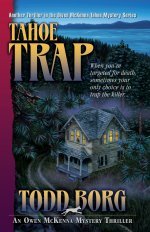Can you get a
college education in a mountain paradise?
Let's face it, the
real reason a standard-issue dude or dudette would come here to go to
school is because he or she wants to ride their snowboard or ski or
sail or bag peaks or go rock climbing or jet-skiing or... You get the
idea. College ain't gonna be the first priority.
But unless you're
like Steve Jobs, Bill Gates, Mark Zuckerberg and other famous
dropouts, college is going to be a critical centerpiece of your
education. A college degree is the new high school degree, the
minimum requirement to nail down most jobs.
When I moved to
Tahoe in my thirties, it never occurred to me that kids might come
here to go to school. But an unusual set of circumstances found me
working as an adjunct teacher at the LTCC (Lake Tahoe Community
College). I soon discovered that LTCC was the cultural center of the
South Shore.
 |
| Lake Tahoe Community College |
Likewise, Sierra Nevada College is the cultural center of the North Shore.
 |
| Sierra Nevada College |
I had an epiphany of sorts and realized that Tahoe is the kind of place that's great for any student whose affinity for the classroom is a bit down the priority list. And I've since met many students who have discovered that they can get a good education in between sunny days on the mountain or lake. (Note, if you skip class on too many fresh-pow days, you're gonna be in trouble just like if you were going to school in the city!)
 |
| Sierra Nevada College Library (You won't find a more beautiful library anywhere!) |
So if you're a
high school student who loves to ski or ride, consider Tahoe. We're not just for
future Olympian wannabes, although many Olympians have come from
Tahoe. But Tahoe can provide a fantastic environment for kids who
would like to find a town where they can both go to college and
pursue the mountain activities that they love.
Both Lake Tahoe
Community College and Sierra Nevada College have beautiful facilities
on beautiful campuses.
Sierra Nevada
College is in Incline Village. It offers four-year liberal arts
degrees and even offers Masters degrees in Teaching and Education.
Lake Tahoe
Community College is in South Lake Tahoe.

It offers two-year
Associate degrees, and, if you live on the California side of the
state line, is incredibly affordable compared to most college
programs. For those kids who want to go on to a 4-year degree, many LTCC credits transfer to four-year programs. (Note, this is one
of the best secrets going in the world of college! I know people who
did two years at community college, got good grades, then easily
transferred to a prestigious UC school (University of California) that wouldn't have accepted
them straight out of high school. You get the cred of a 4-year degree
at the fancy school, but you have more fun and pay roughly half the
price for your education!)
(For parents
reading this, you will want to know that the communities of both of
Tahoe's colleges have lots of what parents like: safe neighborhoods,
lots of opportunities for good, clean exercise and entertainment,
easy-to-get part-time jobs at the ski resorts or in local restaurants
and lodgings, and easy parent access because the Reno-Tahoe
International airport is only 50 minutes away from Incline Village
and an hour and a half from South Lake Tahoe.)
In sum, if you
have an appetite and passion for a mountain paradise,
think about Tahoe. It is a fantastic setting for a great college education.
Check out our
schools:



